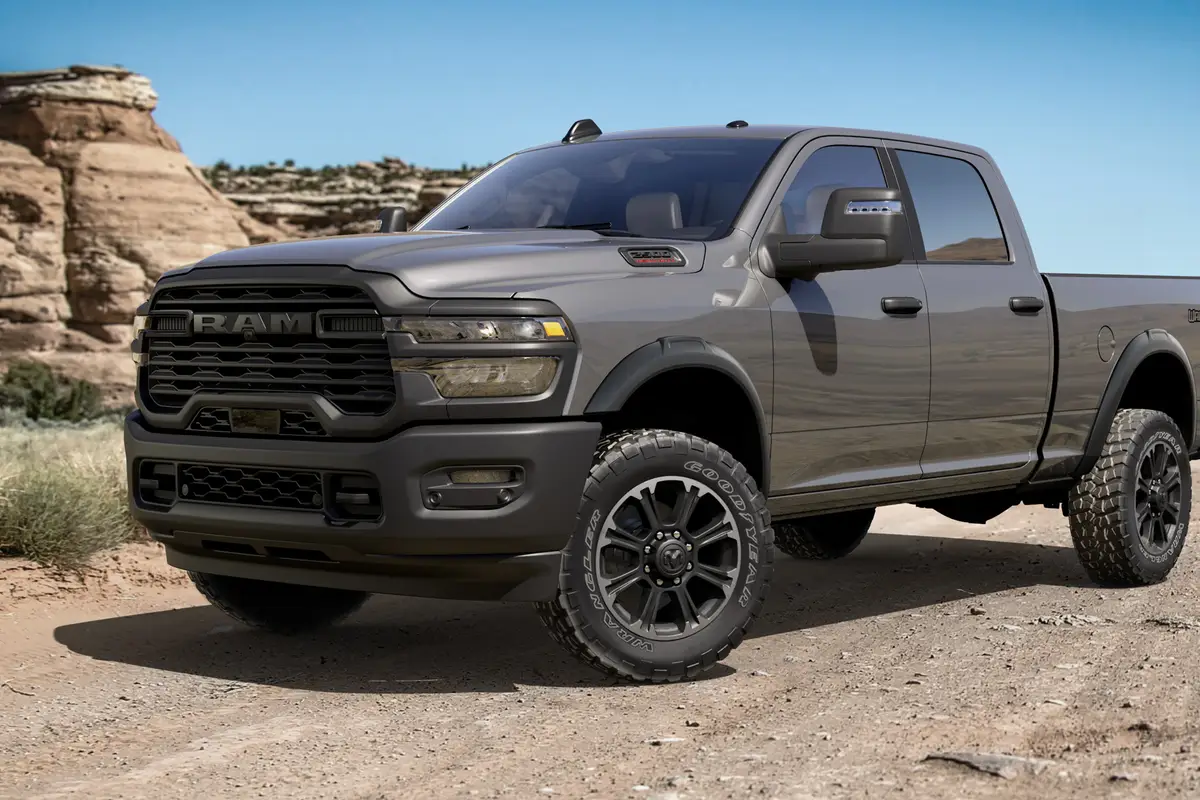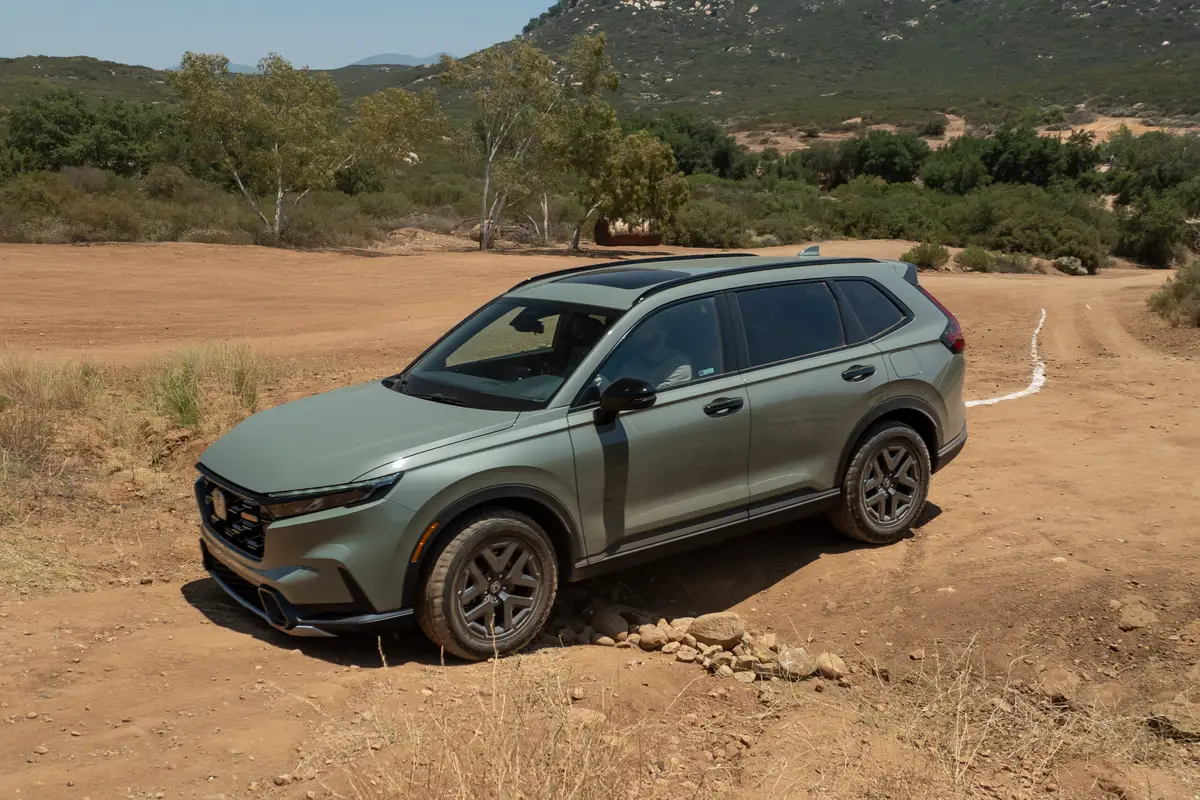chicagotribune.com's view
The aisles outside the executive offices at Ford’s world headquarters in Dearborn are being kept clear of obstructions.
Don’t want anything in the way when heads start to roll if the 2004 Ford F-150, a remake of the celebrated pickup, isn’t a commanding success.
Ford’s feats–pioneering the U.S. auto industry, the assembly line and the $5 a day wage–pale in comparison to the new F-150 trucks, which the company calls the family jewels.
The F-150 has been the best-selling truck in the industry for the last 26 years and the best-selling vehicle–truck, car, van or sport-utility–for the last 21.
The F-150 sells more than 800,000 copies annually, and the target for the new version is to top 1 million.
The F-Series is the chief source of profits for Ford (by some estimates $15,000 per copy) and will fund the development of new cars, Ford’s shortcoming and, thanks to incentives, a drain on the treasury.
The F-150 that goes on sale this fall is offered in regular, super and super crew versions in XL, XLT, Lariat or FX4 trim with 5 1/2-, 6 1/2- or 8-foot beds and a 4.6-liter V-6 or a new 3-valve version of Ford’s 5.4-liter Triton V-8.
But you’ll have to wait until the ’05 model year for the V-6. Only the optional ($895) V-8 and automatic for now to simplify assembly and ensure quality, Ford says. Though this also means an extra $895 in the till to help defray the cost of bringing out a machine that cost an estimated $1,000-$2,000 more to produce than expected.
One choice you don’t get is doors. Every model boasts four doors, the swing-back rear-access type on the regular and super models and the traditional swing-forward type on the super crew.
The new body is more athletic and less artistic than on the ’03, which attempted to make more of a fashion than a function statement. The hood stands higher and is less sloped to direct attention to the big honeycomb grille surrounded by a thick ring of chrome and flanked by jewel-like headlamps. Sheet metal is a little more square and less curved to enhance the tough image.
The big change is inside, where chief designer J Mays’ crew provided a richer, more luxury-car appearance with a 6-inch longer and 1 1/2-inch wider cabin for more stretch space. The added length provides 13 inches of storage space behind the seat in regular-cab models (up from 7 inches) and 6 more inches of legroom in super and super-crew models.
We tested the Lariat Super Crew 4×4 with the new short bed and V-8 rated at 300 horsepower and 365 foot-pounds of torque, up from 260 h.p. and 350 foot-pounds of torque on the old Triton. The V-8 has sufficient muscle to earn a 9,500-pound towing rating, up from 8,600, and a 2,900-pound maximum payload capacity, up from 2,700.
The mileage rating is 14 m.p.g. city/18 m.p.g. highway. A 30-gallon tank is meant to provide long-distance range.
The F-150 boasts stiffer construct ion to eliminate vibration and noise because most motorists associate quiet with quality. Shocks were moved to outside the frame rails to give the F-150 a wider, more stable stance, smoother ride and handling and better footing for towing. Pleasant ride and predictable handling for a full-size pickup, but no matter how much tuning and tweaking the suspension and chassis, you won’t confuse the ride and handling of this machine with that of a family sedan.
Noteworthy new features for ’04 include that new 5 1/2-foot bed “for those to whom length isn’t as important as being easy to garage it,” noted Doug Scott, brand manager of trucks for Ford.
It also makes it a lot easier to park as well as maneuver in parking lots. And whether short or long bed, the walls are 2 inches taller to increase carrying capacity. If you need to haul long items, lower the tailgate and flip over the optional ($195) aluminum bed extender.
Other nice touches: second-row side windows now open all the way, the rear bench seat bottom flips up and folds against the seat back to provide added cargo capacity in the cabin and the rear bench seat is slanted rather than standing upright so as not to torture rear-seat occupants on long-distance rides.
Also, handy dial-up four-wheel-drive with high and low settings; a huge center console with coin, tissue and pen holders, plus dual cupholders front and rear; convenient power adjustable gas/brake pedals (standard Lariat, $120 option in all others); and a power rear window that makes the chore easy, but is a hefty $245 option.
While the cabin is longer, wider and roomier, you better consider optional running boards ($250 flat, $350 tubular) or carry a step stool to get in the cabin.
And once inside, why did Ford not offer heated/cooled seats as an option like those in the Ford Expedition and Lincoln Navigator SUVs, which are based on the F-150?
“Not at this time, though we’re looking at them,” Scott said.
Ford boasts the ’04 models are priced from $245 to $635 higher than comparable ’03 versions, far less than the cost of the new equipment added.
Scott says Ford expects to still make a significant profit by not only selling a richer mix of new F-150s with options, but by selling them without having to resort to incentives.
Until Ford gets the new F-150 production up to capacity, it will continue to offer the current model under the Heritage designation. Heritage will be the low-cost, incentive-laden price leader to free the new F-150 of incentives, Scott said.
Good luck.
Though Ford is optimistic about the F-150, some members of the media insist that the fat lady is warming up backstage. Toyota will expand its full-size Tundra pickup lineup this fall with a new double-cab version at the same time Nissan brings out its first full-size pickup, the Titan, that promises to be larger than the F-150 and sport a more potent V-8 as standard.
We don’t expect Ford, Chevrolet or Dodge to suffer. While undying loyalty to Ford, Chevy or Dodge is gone when it comes to cars, it still is a factor when it comes to buying a truck.
Says Ford’s Scott: “We’re aware of Tundra and Titan, but we’re not going to lose any sleep over them. Not only are we launching our new truck from a position of [sales] strength, the latest J.D. Power Dependability Study rated us No. 1 by a wide margin. People don’t migrate into Japanese trucks like they do into Japanese cars. The one who should be most concerned about Tundra is Nissan, and the most concerned about Titan is Toyota.”
Remote keyless entry, cruise control; outside temperature/compass readings; electronic climate control; steering-wheel radio controls; power driver’s seat/locks/windows/mirrors (heated and with redundant turn-signals) ar e standard.
Base price of the Lariat 4×4 Super Crew is $35,570. With all the options, breaking $40,000 should be no chore.
TEST DRIVE
2004 Ford F-150 Lariat
Wheelbase: 132.5 inches
Length: 218 inches
Engine: 5.4-liter, 300-h.p. V-8
Transmission: 4-speed automatic
Fuel economy: 14 m.p.g. city/18 m.p.g. highway
Base price: $35,570
Price as tested: $38,945. Includes $895 for 5.4-liter V-8; $225 for AM/FM stereo with clock and in-dash CD player; $595 for leather trimmed captain’s chairs with console and floor shifter; $350 for trailer towing package, $645 for heated seats; $225 for two-tone paint with lower rocker panel and wheel lip accents; $195 for pickup bed extender; and $245 for power sliding rear window. Add $795 for freight.
Pluses: New bolder and less artsy design. Longer/wider cabin. Lineup now offers five rather than just three models and all come with four doors. New, short 5 1/2-foot bed for easier parking and/or garaging yet optional bed extender for longer cargo when you need it. Power adjustable pedals standard.
Minuses: The options and potential to run up the price just never end–yet no cooled seats as offered in Expedition SUV. No V-6 or manual transmission until ’05. If not 6’5″ tall, the optional running boards are a must.
Latest news



